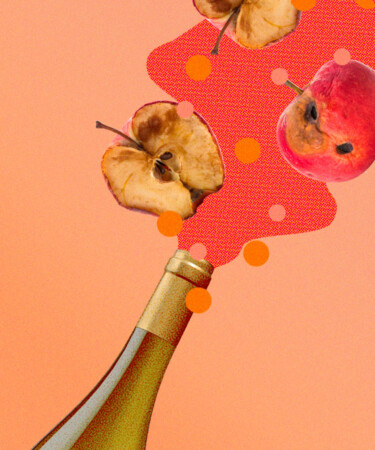The wines of Burgundy are some of the most esteemed, expensive, and age-worthy in the world. Collectors fawn over the most prestigious producers and tuck away bottles as prized possessions in cellars. So in the early aughts when white Burgundy enthusiasts found an alarming number of their bottles were meeting an untimely death, fear spread throughout the fine-wine-loving community. This silent killer that essentially spoiled some of the world’s most valuable white wines came to be known as premox, short for premature oxidation.
The first modern instances of premox were recorded around 2002, when people started popping bottles of white Burgundy from the 1996 vintage — which, at only about 5 years old, would still be considered youthful — and noticed that they were already showing severe signs of aging, to the point where the bottles were considered flawed. The pattern continued with subsequent vintages, and now is most commonly known to affect Chardonnays from Burgundy from the mid-1990s through the early 2010s.
But what exactly is premox and what causes it? VinePair tapped Eun Hee Kwon, sommelier at New York City’s Le Coucou and content creator behind the popular wine-focused @ehk.vin Instagram page, to explain this dreaded phenomenon.
“Premox is a type of flaw where wines show signs of aging much earlier than they should,” Kwon says. To detect premox in a wine, Kwon suggests looking out for both color as well as off flavor profiles. Affected wines can appear brown, as opposed to showing their typical golden hue, and can present extreme oxidative notes like old bruised fruit.
In addition to appearing flawed right off the bat, these wines can also get worse the longer they’re exposed to oxygen. “These wines usually deteriorate quickly, even minutes after opening the bottle,” Kwon warns.
This rampant deterioration of fine wines has been extremely puzzling to the wine industry. While there have been massive leaps in research and technology in studying winemaking and flaws, there is still no one answer that explains why this particular category of wines was so singularly impacted.
Instances of premox have been reported in white wines from other parts of the world, and occasionally demonstrated in red wines, but the scale of its impact on white Burgundies from this time period is unparalleled. What’s more is that the flaw doesn’t impact all of the wines from a certain producer or from a specific vintage; it occurs on a bottle-to-bottle basis, making it even more difficult to trace.
Kwon admits that the exact causes are still heavily debated, but suggests that many in the industry agree that it could be associated with faulty corks or decreasing the amount of sulfur dioxide added to the wines. Other theories implicate environmental factors like climate change, an increased use of organic agriculture, or even altered solar activity. Some think that the increased pressure to put wines out on the market quickly, without taking the proper time to make them, damages the wines. But most agree that it’s a mystery, and likely a combination of several factors led to these detrimental results.
Although these wines have endured a rampant, zombie-apocalypse-like flaw, the demand for aged Burgundies is still fervorous. So at Le Coucou, an acclaimed French restaurant with a deep wine list, they still offer an extensive range of these wines.
“I keep it in mind, but it doesn’t deter me from working with older Burgundies,” Kwon says. “If the bottle is premoxed, I can open another bottle (and hope the next one is sound) or guide the guest towards a different wine.”
However, outside of a restaurant context it might take a little digging to ensure you buy the right bottle. “It’s a luxury working at a restaurant where the cost of a flawed bottle would not fall on me personally,” Kwon adds. “If I were to buy a bottle from retail myself, I would probably do a lot of digging for the specific bottle I am looking to purchase depending on the vintage or producer.”
*Image retrieved from Krakenimages.com via stock.adobe.com
